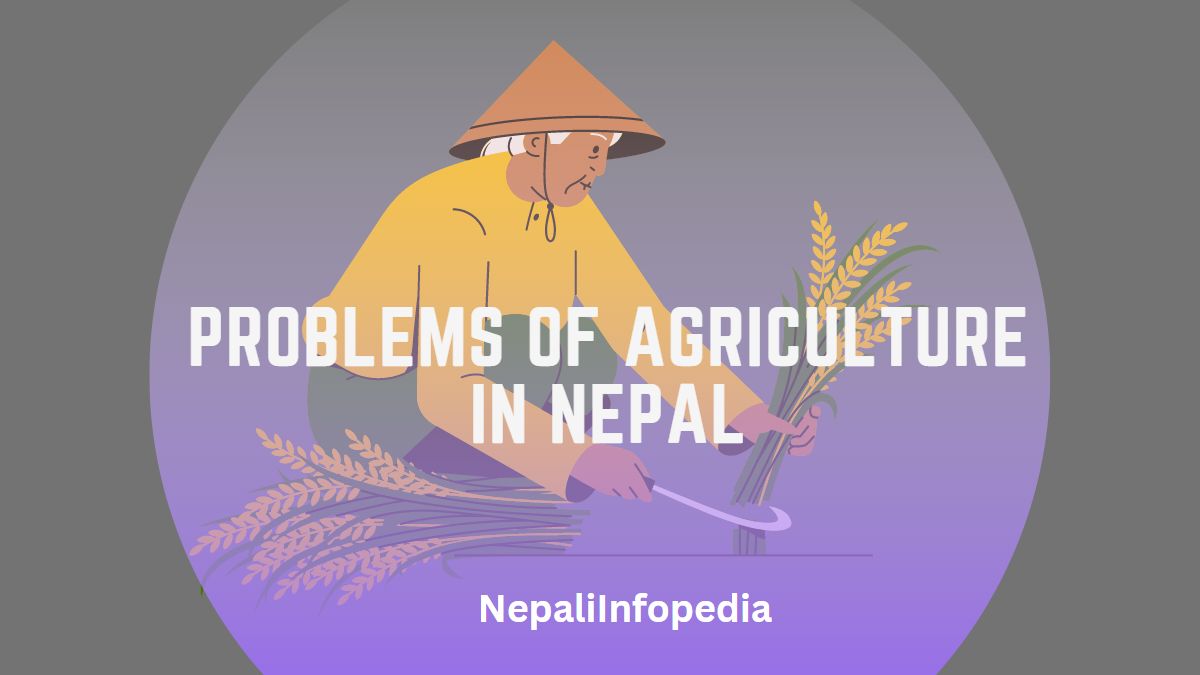Agriculture is the primary source of income for many families in Nepal, providing employment and food security for the country. Food Crops in Nepal are one of the sources of income for Nepali families. Despite being an important sector, the agriculture industry in Nepal is underdeveloped. However, the industry faces a number of challenges that hinder its development and the well-being of farmers. In this blog post, we will explore the various problems facing agriculture in Nepal and the impact they have on the sector and the people who rely on it. From land fragmentation and a lack of infrastructure to climate change and limited access to markets, we will delve into the obstacles that Nepal’s agriculture industry must overcome in order to thrive.
Problems Of Agriculture in Nepal
1. Land fragmentation
Many farms in Nepal are small and fragmented, with an average size of just 1.1 hectares. This makes it difficult for farmers to use modern machinery and techniques, as the small size of their farms does not justify the investment in such equipment. Land fragmentation also leads to less efficient use of resources and lower productivity.
2. Lack of infrastructure
Nepal’s agricultural sector is hindered by a lack of infrastructure, including poor roads, limited access to electricity and irrigation, and inadequate storage facilities. Poor roads make it difficult for farmers to transport their crops to markets, while a lack of electricity and irrigation limits modern farming techniques. Inadequate storage facilities lead to food waste and reduced profits for farmers.
Read Similar: Solutions for Agriculture in Nepal
3. Poor soil quality
Much of the land in Nepal is severely degraded, with low fertility and poor drainage. This limits crop yields and makes it difficult for farmers to grow a variety of crops. Poor soil quality is often a result of overuse, erosion, and the lack of proper fertilization and soil management practices.
4. Lack of access to credit
Many farmers in Nepal lack the financial resources to invest in modern agricultural techniques, such as irrigation and fertilizers. This is partly due to a lack of access to credit, as banks and other financial institutions are often unwilling to lend to small farmers due to the perceived risks. As a result, farmers are unable to make the necessary investments to improve their agricultural practices and increase their productivity.
5. Limited access to markets
Many farmers in Nepal struggle to sell their crops due to a lack of access to domestic and international markets. This is due to a range of factors, including poor infrastructure, limited transportation options, and competition from cheaper imports. As a result, farmers often receive low prices for their crops, which can make it difficult for them to earn a decent income.
Read Similar: Solutions of untouchability in Nepal
6. Pests and diseases
A wide range of pests and diseases, such as the stem borer and bacterial wilt, pose a significant threat to crops in Nepal. These pests and diseases can reduce crop yields and quality, leading to lower profits for farmers. In addition, farmers often lack the knowledge and resources to effectively control these pests and diseases, further exacerbating the problem.
7. Climate change
Nepal is vulnerable to the impacts of climate change, including floods, droughts, and landslides, which can devastate crops and reduce agricultural productivity. Climate change also leads to changes in temperature and precipitation patterns, which can affect the viability of certain crops and the timing of the growing season.
8. Lack of extension services
Many farmers in Nepal lack access to extension services, which provide them with the latest information and advice on how to improve their agricultural practices. Extension services can help farmers learn about new technologies and techniques, such as improved seed varieties and sustainable farming methods. A lack of extension services means that many farmers are unable to take advantage of these advances.
Read Similar: Causes of untouchability in Nepal
9. Limited use of technology
Nepal’s agriculture sector is relatively underdeveloped and lacks the use of modern technologies, such as precision agriculture and genetically modified seeds. These technologies can increase crop yields and reduce the use of pesticides and fertilizers, but their adoption has been limited in Nepal due to a lack of awareness and access.
10. Limited government support
The government of Nepal provides limited support to the agriculture sector, including research, extension, and credit services. This lack of support hinders the development of the sector and makes it difficult for farmers to access the resources and knowledge they need to improve their agricultural practices and increase their productivity.
In conclusion, the problems facing agriculture in Nepal are numerous and complex, ranging from land fragmentation and a lack of infrastructure to climate change and limited access to markets. These issues have a significant impact on the sector and the people who rely on it, limiting the potential for growth and prosperity. However, with the right policies and investments, it is possible to address these challenges and build a more sustainable and resilient agriculture industry in Nepal. By focusing on improving land and water management, increasing access to credit and technology, and supporting small farmers, Nepal can overcome the problems facing its agriculture sector and create a brighter future for all.

I can slove nepali famer problem
How?